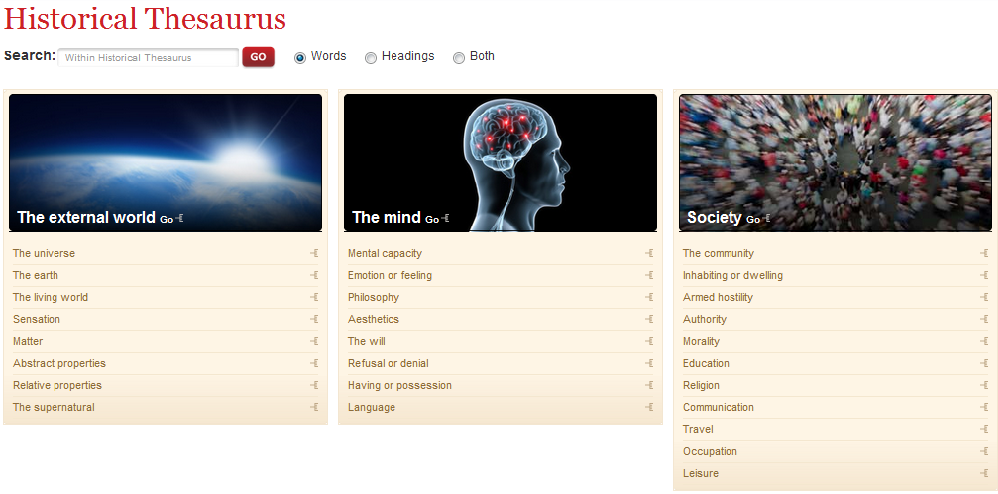Another very specialized but no less interesting new feature of the OED online is called Historical Thesaurus. It is described by the OED authors as: “[…] a taxonomic classification of the majority of senses and lemmas in the OED online. It can be thought of as a kind of semantic index to the contents of the OED.” (http://www.oed.com/thesaurus;jsessionid=3E4E740D3D7B000C7E6E8F0BCC867187 accessed 16.07.2012) In view of this description and its thematic classification of entries this feature seems – at first sight – to be closely related to the earlier mentioned feature Categories. However, once the Historical Thesaurus is opened and browsed it becomes clear that it uses different head classifications, namely The external world, The mind and Society and also different criteria to structure its contents.

Screen shot 7 The Historical Thesaurus
Concerning the structure of the Historical Thesaurus, the three headings are umbrella terms for several subtopics which are all listed below the headings. In turn, all subtopics are connected to the umbrella term by one or the other sense e.g. the universe, the earth, the living world, sensations, matter, abstract properties, relative properties, and the supernatural are all sub-topics belonging to the heading The external world. Moreover, each of these sub-topics can easily be explored further as all the information is classically displayed in a tree structure. Sub-classes of any topic are always further structured according to their part of speech as well as several semantic classifications. In the case of the earth the subclasses are for example [noun], [adjective], [adverb], surface of the earth, region of the earth, geodetic references, direction, land, water, named regions of the earth, structure of the earth, minerals, earth science and atmosphere. In turn all these subclasses consist of several further more specific subdivisions. Having clicked through all these classes, according to the specific research interest, a chronologically arranged list appears. It gives an overview of the word entries belonging to that specific class. Taking the chronological order into consideration, a basic approach would be to explore the lexical history of a class or meaning through time. Doing so, it might be interesting to investigate if two or more words shared the same meaning at a specific date in time and whether one of them has become more disseminated in the English language.
Created with the Personal Edition of HelpNDoc: Easy EBook and documentation generator